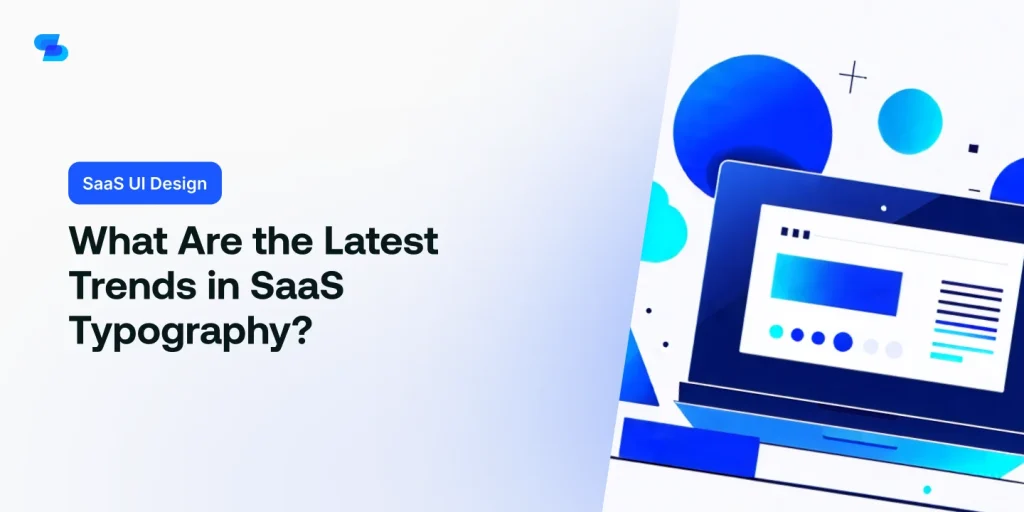As you navigate the SaaS landscape, you’ve likely noticed a shift in typography trends. Sans-serif fonts, like Helvetica and Open Sans, have become the go-to choice for their clean, versatile appearance and screen clarity. But that’s not all – variable fonts are gaining traction for their file efficiency and adaptability, while bold and playful typography is being used to create unique brand identities. And yet, amidst these creative expressions, minimalist typography remains essential for effective communication and user navigation. You’re probably wondering what these trends mean for your own SaaS brand – let’s explore the latest developments and what they can do for you.
The Rise of Sans-Serif Fonts
As you explore the latest SaaS designs, you’ll notice a prevailing trend: sans-serif fonts have become the go-to choice for user interfaces, dominating the digital landscape with their clean lines and versatility. This shift is largely driven by the need for clarity and readability on screens of varying sizes. Sans-serif fonts like Helvetica, Open Sans, and Montserrat have become staples in SaaS design, allowing for efficient communication of complex information.
However, this doesn’t mean serif fonts are completely out of the picture. In fact, there’s a growing serif resurgence, with designers incorporating serif fonts to add a touch of sophistication and elegance to their designs.
The key is to strike a balance between sans-serif and serif fonts, creating a typographic hierarchy that guides the user’s attention. By combining the two, you can create a visually appealing and intuitive user interface that effectively communicates your message.
As you design your SaaS product, consider the role of typography in shaping the user experience, and experiment with different font combinations to find the perfect blend.
Variable Fonts Take Center Stage
You’re now likely wondering how to take your typography to the next level, and that’s where variable fonts come in, offering a flexible and customizable solution that can further enhance your SaaS product’s user experience.
With variable fonts, you can access a range of styles and weights from a single font file, allowing for greater design flexibility and consistency.
One of the significant variable font advantages is its ability to optimize file size, reducing the overall weight of your website or application. This results in faster loading times and improved performance.
In dynamic text applications, variable fonts enable you to create responsive typography that adapts to different screen sizes, devices, and orientations. This means you can create a seamless user experience across various platforms.
By leveraging variable fonts, you can take your SaaS product’s typography to new heights, providing users with a more engaging and immersive experience.
Embracing Bold and Playful Typography
By injecting bold and playful typography into your SaaS product, you can craft an attention-grabbing visual identity that sets you apart from the competition and resonates with your target audience. This trend is all about having fun with type and pushing the boundaries of what’s considered ‘traditional’ in SaaS design.
To get started, experiment with colorful contrasts that create visual interest and draw the user’s eye to key elements. You can also use animated text to add an extra layer of interactivity and whimsy to your design.
When done thoughtfully, bold and playful typography can help you build a strong brand personality and create a memorable user experience. Just be sure to balance playfulness with legibility and usability to avoid overwhelming your users.
Custom Fonts for Unique Brands
Take your brand’s typography to the next level by investing in a custom font that accurately reflects your unique personality and values, allowing you to stand out in a crowded SaaS marketplace. A custom font can help you establish a consistent visual identity across all your marketing channels, making your brand instantly recognizable.
When creating a custom font, consider your brand personality and the emotions you want to evoke in your audience. For instance, a tech startup might opt for a modern sans-serif font, while a creative agency might choose a playful script font.
Don’t be afraid to experiment with font pairing to add depth and visual interest to your design. Consider pairing a bold custom font with a clean, neutral font to create a striking contrast.
Minimalist Typography for Clarity
In today’s digital landscape, where users are constantly bombarded with information, a well-crafted minimalist typography approach can help you cut through the noise and communicate your message with crystal-clear clarity. By stripping away unnecessary design elements, you can create a typography system that’s easy to read, understand, and navigate.
To achieve this, focus on using a limited palette of serif styles that provide a clear visual hierarchy. This means selecting a primary font for body text, a secondary font for headings, and a tertiary font for captions or footnotes.
This text hierarchy helps guide the user’s attention and creates a sense of order. Additionally, consider using font sizes, line heights, and margins to create a clear visual flow.
Final Thoughts
You’ve got the scoop on the latest SaaS typography trends!
Sans-serif fonts like Helvetica and Open Sans are leading the way, offering clean and versatile designs.
Variable fonts are revolutionizing file efficiency and adaptability.
Bold and playful typography, plus custom fonts, are helping brands stand out.
And, minimalist typography guarantees clarity in a crowded digital space.
Now, it’s your turn to elevate your SaaS design with these typography trends that prioritize clarity, versatility, and personality.

